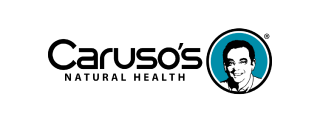
- Health advice
- Nov 11, 2013
Pure essential oils are highly concentrated natural plant chemicals and, therefore, must be used with some caution. They are best used diluted. Adding them to massage oils, creams and lotions is easy, but when adding to water they need to be mixed with something that helps oil and water mix, alcohol for example. Below are guidelines from Mr Vitamins Aromatherapist Maria Mitchell on how to blend oils into oil, water and for skincare.
1. Pure essential oil blends
100% pure essential oils that are not already blended into a base (such as massage oil, water or cream) can be used as follows:
Vapourisers and diffusers
- This is a great way to change your mood or the vibe in a room.
- A vapouriser is a bowl in which water is heated allowing the essential oils to be gently vapourised into the air; they can be heated electrically or by candles. When using candles check that your bowl does not have cracks, as oils are flammable and care is needed.
- A diffuser is similar but uses a cool mist to disperse the oils.
- Add water to the vapouriser or diffuser, then add 4-6 drops of pure essential oil. Switch it on, or light the candle, and in a few minutes you will be enjoying the beautiful aromas.
N.B. Do not leave lit candles unattended.
Dry inhalations
- This is a useful method for using essential oils when dealing with emotions and stress. Inhale the scent, as you need, for help in returning to a state of calm.
- Add just a few drops of the essential oil on a tissue, carry with you and inhale as needed.
Steam inhalations
- Excellent for any sinus and respiratory problem as essential oils are all, to some extent, anti-bacterial and anti-viral.
- In a glass or metal bowl (not plastic) add 2 cups of boiling water. Then add 4-6 drops of your essential oil and use a towel to cover bowl and head. Inhale steam for 10-20 minutes. You may need to take a breath of fresh air, or clear your nose from time to time, but return to the steam and persist for best results in clearing congestion.
2. Essential oils in water
Adding essential oils to water takes some care, as oils and water do not naturally mix. Alcohol (unflavoured vodka works well as it has no scent, as does unflavoured gin) and/or milk can be used to help oil and water mix together.
Spray
- Sprays can be used to scent a room, onto the skin as a perfume, or to treat minor wounds or burns, depending on the essential oils selected.
- In a 50ml spray bottle add 10 drops essential oil and 2 teaspoon vodka then add water to fill.
In a bath
- Full baths or foot baths are very relaxing ways to enjoy your essential oils as they require you to stop and appreciate the lovely aromas which will then work on your nervous system to reduce stress.
- Add 5-8 drops of essential oil to 2 tablespoons of milk, then add to an already filled bath.
3. Essential oils in skincare
Oils can be used on your skin for skin care, wound care or pain management. The base product to which you add your essential oils should be selected to have benefit for your particular use.
Bases and carriers for your essential oils
- Vegetable oils such as almond, hazelnut, macadamia, rosehip, jojoba can make great bases for massaging or moisturising. Healthy oils such as avocado, olive and coconut oils can be used too, if it’s good enough to go inside you then it’s good for your outside too!
- Essential oils can be added to any cream or lotion you may have. However, natural creams are best for skin care.
- Creams and lotions should not contain minerals oils, as these create barriers on the skin and prevent penetration of the essential oils, therefore reducing their effectiveness.
On your face
- Faces, with their more delicate skin, require a lower concentration of essential oils that the rest of the body, stir in 1 drop of essential oil to 1 teaspoon (5ml or 5gm) of base product.
- If using a vegetable oil to moisturize, apply just a few drops to a cleansed and damp face, stroking gently with your fingertips.
Body oils and creams
- To body products stir in 2 or 3 drops of essential oil to 1 teaspoon (5ml or 5gm) of product.
Wound care
- Essential oils can be used in slightly higher amounts for skin that is damaged or has minor wounds. Applying around the wound can also be effective as the oils will penetrate the skin and do their work.
- Add 2 to 5 drops of essential oil to 1 teaspoon (5ml or 5gm) of base product. Healing creams such as calendula cream or tea tree cream can be used to increase the healing action.
Pain management
- Essential oils are used in many products designed for pain relief. The essential oil component can be quite strong in some in order to reduce pain. However, the stronger the oils, the higher the risk of skin irritation.
- Add 5 drops of essential oil to 1 teaspoon (5ml or 5gm) of base product. Bases that are useful here include arnica cream and hypericum cream.
A couple of things to note, each essential oil must also be checked for any specific cautions in using that oil. And remember that although natural, due to their concentration, less is more. If you do have an uncomfortable reaction to an essential oil, use plain vegetable oil to cover the affected area and wipe off, repeat, then use very soapy tepid or cool water to wash off. It’s not always necessary to put the oils on your skin. If you have sensitive skin, the aroma alone can work as a method of treatment or supportive treatment. Your sense of smell links directly into your brain and can therefore affect your nervous and hormonal systems and from there every part of your body. For any serious medical conditions, if on medication, pregnant, or if symptoms persist, please consult a health care professional.
Maria Mitchell - Aromatherapist and Herbalist
Maria Mitchell is a fully qualified Aromatherapist and Herbalist whose passion has led her into teaching, and writing about the healing power of Aromatherapy. You can learn more about Maria here
Related Articles
Recently Viewed
- ${ variant.price | currencyFromCents } | ${ variant.title } ${ variant.price | currency } | ${ variant.title }

















